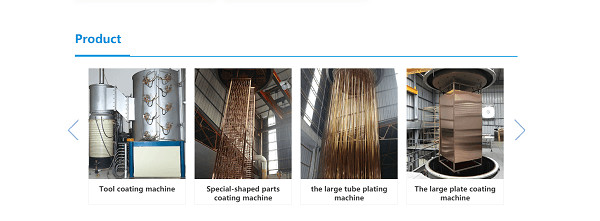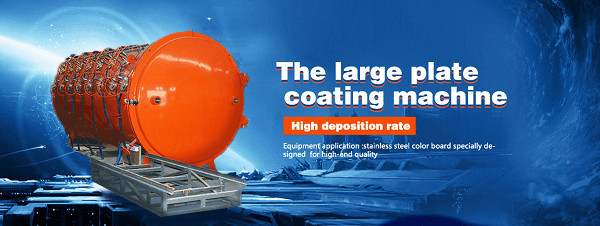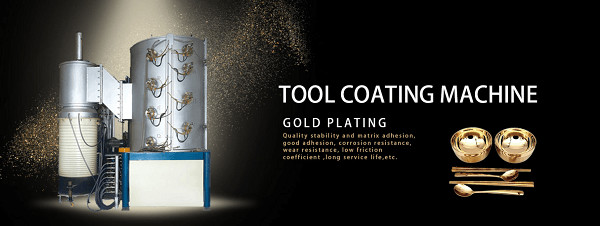Product Tips - Clean Vacuum Gauge
In general, the strict principle that surfaces exposed to vacuum should not be touched by hand should apply. This is especially true for high vacuum and ultra high vacuum systems.
With a vacuum gauge, fingerprints are also imprinted on the surface under high temperature or ion bombardment conditions and have a risk of affecting their function. Therefore, when working with vacuum measuring equipment, suitable gloves should be worn, especially when assembling cleaned parts.
Important tools for cleaning vacuum gauges are lint-free paper towels, cotton swabs and isopropyl alcohol (isopropanol is also known as isoamyl alcohol or 2-propanol). In addition, it is recommended that the workplace be clean, tidy, light, and easy to remove solvent vapors.
vacuum coating machine,pvd coating machine,pvd vacuum machine,vacuum ion coating machine,multi-arc ion coating machine
Instructions for cleaning all types of vacuum gauges:
Diaphragm vacuum gauge
A vacuum gauge that operates according to the pressure definition, which measures the force on the surface of a known diaphragm for a total vacuum range as low as 1 hPa. (eg APR 250/260). The active measuring element is typically a diaphragm whose skewness is converted into an electrical signal by various methods. The geometry exposed to vacuum is relatively simple. There are neither mechanical structures that are relatively complex and require special maintenance, nor extreme operating conditions, such as high temperatures that would bake dust (except for capacitive vacuum gauges, see point 2). These measuring instruments are very sturdy and any cleaning method is acceptable.
The type of contamination determines the cleaning process. In industrial applications, dirt often consists of oily dust, which can be removed using organic solvents. Such as isopropyl alcohol, which is an alcohol that has been shown to easily remove such soils without any effect on the elastomer. After dropping a few drops of organic solvent into the pipe, gently shake the entire equipment and then pour out the solvent. This process is repeated until no more dirt is carried away by the cleaner.
Once the dirt has been removed, the diaphragm vacuum gauge can be "vacuum dried" by connecting it to a vacuum pump or vacuum system. In general, it is not possible to completely remove the dirt by simply using a solvent rinse. Due to the sensitivity of the diaphragm to mechanical shock, it is not recommended to choose a mechanical cleaning method that may produce better results. Before starting a cleaning test, it is best to understand the price of the new vacuum gauge, as cleaning costs may exceed the value of the vacuum gauge. After a period of time, the vacuum gauge will be replaced anyway.
2. Capacitive diaphragm vacuum gauge
Before reading this chapter, we recommend that you read the diaphragm gauge section first.
Like a diaphragm vacuum gauge, a capacitive diaphragm vacuum gauge uses pressure to define the pressure at which a gas is applied to a known surface-diaphragm (eg, CMR36x/37x). To clean it, you may take it for granted that you can just rinse the diaphragm as described previously. However, it is important to note that there is a big difference between clean capacitive vacuum gauges compared to the previously described diaphragm vacuum gauges:
vacuum coating machine,pvd coating machine,pvd vacuum machine,vacuum ion coating machine,multi-arc ion coating machine
(a) Capacitive vacuum gauges are often highly sophisticated instruments and must be handled with care.
(b) These measuring instruments can be used at atmospheric pressure or near high vacuum. However, the lower the pressure measured, the more precise the diaphragm will be, and the user will have to take extra care when cleaning.
(c) Forces as low as μN range are detected and expanded electronically. Therefore, cleaning must not affect integrated electronics.
(d) Capacitive diaphragm vacuum gauges are often used in processes that produce insoluble deposits. They operate at high temperatures to prevent the precipitation of some substances, but cause other substances to adhere particularly tightly to the surface.
(e) These measuring equipment usually have accessories that protect the diaphragm, but this makes it difficult to clean.
Contamination of capacitive diaphragm vacuum gauges can be found by pressure measurement error or zero offset. In fact, the former is often not easy to find because it needs to be compared to a reference vacuum gauge to detect any deviation. Zero instability is easy to spot, but there are other reasons. First, the correct zero adjustment must be carried out in accordance with the procedures specified in the operating instructions. If the contamination still causes a zero offset after handling according to the operating instructions, a visual inspection of the vacuum gauge is required. It must be removed from the vacuum system and the connection flange, the inside of the pipe, and the built-in filter components (if necessary) must be inspected. If dust is found on the surface, use a cotton swab dipped in isopropyl alcohol to try to see if there is any chance of success in cleaning. If a light wipe can make the coating on the tube wall attach to the swab very easily, it can be assumed that the cleaning will succeed.
The process is similar to the one described in point 1: Fill the solvent to make it work, and gently rotate it to drain it. Repeat this process several times until no more dirt is being washed out. Let it dry, at least let it dry overnight in a vacuum system; then, adjust the zero point as instructed. Long-term observations show whether the zero stability is improved. If this is not the case, the measuring instrument must be replaced.
3. Pirani vacuum gauge
According to the Pirani principle, heat transfer vacuum gauges are often used as inexpensive vacuum gauges in low vacuum and medium to low vacuum ranges (eg TPR 280). This is an indirect measurement that allows the pressure in the vacuum system to be inferred by the heat dissipated by the fine wire to release the gas.
If the heating wire is dirty, it can interfere with heat dissipation and mislead pressure measurements. The heating wire of a Pirani vacuum gauge is usually composed of a coiled tungsten wire having a diameter of about 1 μm. The operating temperature of the tungsten wire is usually about 100 ° C, which is higher than the room temperature, causing the oily dirt to be baked. Since the tungsten wire is very slender, it is of course impossible to clean it by wiping. Therefore, like a capacitive diaphragm vacuum gauge, gentle cleaning with alcohol is the only option.
Be very careful about the sensitive wire during the process. Care must be taken to pour the solvent into the tube along the inner wall of the tube. Shake is strictly prohibited and the solvent should be carefully poured out as it is filled.
vacuum coating machine,pvd coating machine,pvd vacuum machine,vacuum ion coating machine,multi-arc ion coating machine
At the end of the cleaning process, the vacuum system must be dried and then adjusted to atmospheric pressure and zero as indicated. You will see if the cleaning work is successful. Experience has shown that the success rate is around 50%. Since the replacement sensor is moderately priced, it is best to check in advance whether the cleaning fee is reasonable.
4. Hot cathode vacuum gauge
The hot cathode vacuum gauge is a high vacuum meter that can be used from medium vacuum to ultra high vacuum. They use gas ionization to measure the pressure by ionizing the gas and using the ion current as a pressure metric (eg, PBR 260).
This measurement principle requires the sensor to be made of precision wire components (hot cathode, grid, anode) that cannot be cleaned. With this measurement principle, contamination is often caused by a chemical reaction (small amount) of tracer gas within the sensor itself. This is due to the high temperature prevailing here and the collision of gas molecules with electrons and ions. In this process, an insulating layer is formed on the surface, making the vacuum gauge difficult to work, or hindering the vacuum gauge from working completely.
Hot cathode vacuum gauges typically have a gassing function that heats the electrodes by an increased emission current to release the attached gas. However, this function does not remove any visible deposits from organic compounds (carbon chemistry) or chemical reactions of silicon-containing compounds. Low molecular weight vapors from O-rings, pump oils or vacuum greases are converted into crosslinked thermosets, siloxanes or silica in measurement systems that cannot be removed using conventional solvents. Since the sensor is not mechanically cleanable due to its delicate results, the head must be replaced if necessary.
5. Cold cathode vacuum gauge
Cold cathode vacuum gauges are available in a variety of designs (Panning, Inverted Magnetron) as single or combined vacuum gauges, usually in combination with Pirani sensors (eg PKR 251).
Their applications range from medium vacuum to ultra-high vacuum, just like hot cathode vacuum gauges, although their main application range is high vacuum. The accuracy of these cold cathode vacuum gauges is clearly lower than that of hot cathode vacuum gauges. Because the measuring system is a simple mechanical design and does not include complex components, it is very easy to clean and often uses an O-ring for precise sealing, so it can be easily removed.
vacuum coating machine,pvd coating machine,pvd vacuum machine,vacuum ion coating machine,multi-arc ion coating machine
Disassembly, cleaning, and reassembly are usually described in the operating instructions.
Before disassembly, it is important to remove the protective net and the inlet filter to assess the degree of contamination. During the inspection, it is often seen that there are rainbow-to-brown-black deposits on the pipe wall. After removing the sensor from the electronics, if necessary, disassemble it into individual parts, and those tightly adhering deposits must be removed. Fine-grained finishes (eg Scotch-BriteTM 400 grit or 1000) are best suited for this purpose to flush the surface. It is important that the sealing faces of the O-rings only work in concentric circles so that there are no scratches on the sealed pipes.
This not only protects your hands from the abrasive dust generated by unknown compounds, but also protects the surface of the device from dirt and acid traces on the skin. Small parts that are difficult to clean must be replaced, such as starting aids, and the deformed or fragile elastomer must also be replaced.
Once the sediment removal is completely removed, the surface dust must be thoroughly removed using isopropyl alcohol. The dry parts must be assembled according to the operating instructions and, if necessary, a complete set of service tools. After the sensor is installed, the vacuum gauge is initially inspected using a helium leak detector (no electronics). When the seal joint and the electrical feedthrough are squirted, the increase in local signal (leakage < 10-10 Pa m3/s) should not be detected. The gas should be released in the vacuum system for at least one to two hours before restarting the vacuum gauge.





